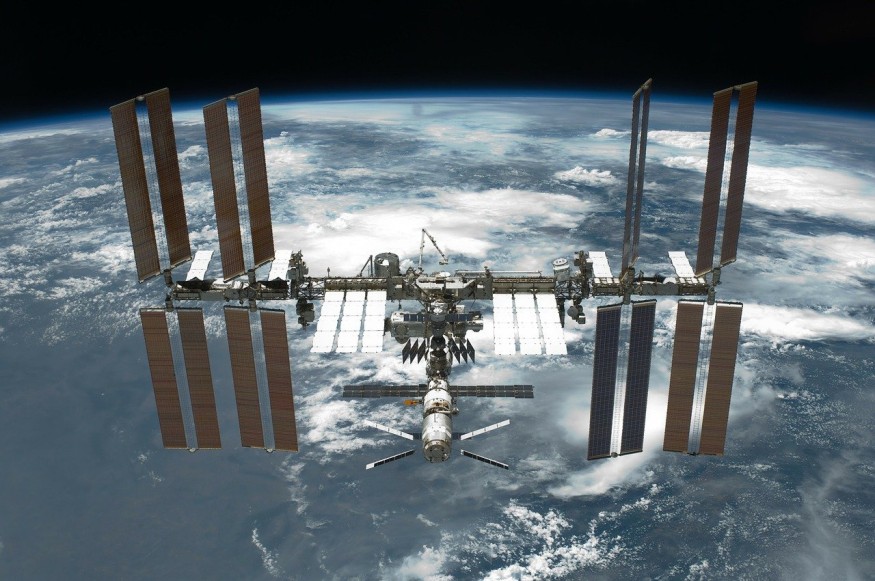Amid tensions between Russia and the United States over the Ukraine war, two NASA astronauts performed a spacewalk on Tuesday to prepare to install new solar arrays on the International Space Station.
UPI said Kayla Barron, 34, and Raja Chari, 44, spent six hours and 54 minutes on their spacewalk, which began at 8:15 a.m. EDT and ended at 8:15 a.m. EDT. It was their second and first spacewalks, respectively.

How NASA Astronauts Wrapped Up 6-Hour Spacewalk In ISS
The legacy solar arrays on the space station were built with a 15-year on-orbit life in mind. Although they are all still operational, they have begun to exhibit symptoms of diminished power generation. The new iROSAs are placed so that they partially overlap the existing arrays.
When all six of the more powerful iROSAs are deployed, the complex's total usable power will increase from 160 kilowatts to up to 215 kilowatts. Space.com said the extra power is required to keep the station operational until 2030 and support expanded commercial activity on board.
The inclusion of the iROSAs not only ensures that the station has enough power but also serves as a test for NASA's Artemis Gateway, which will be put in lunar orbit. The Gateway's intended arrays will be longer and deployed remotely, but they will otherwise utilize Redwire's technology.
Barron and Chari were told by Mission Control to tie back multi-layer insulation on spare battery charge/discharge units to facilitate their robotic replacements or relocations after finishing the prep work for the iROSA installation more than an hour ahead of schedule.
The two astronauts also broke torque and reset bolts on various orbital replacement units (ORUs) placed on an external platform on the S4 truss section for similar reasons and with time to do further "get-ahead" activities. To release the bolts holding the ORUs in place on the pallet, the spacewalkers used a power drill called a pistol-grip tool.
Barron and Chari finished the spacewalk by assessing the Alpha Magnetic Spectrometer (AMS), a cosmic-ray detector that had been repaired during a series of difficult spacewalks earlier this year. The team looked at getting access to a patch panel for future development on the research equipment.
Barron and Chari returned to the Quest airlock at 3:06 p.m. EDT on Tuesday, 6 hours and 54 minutes after the spacewalk began.
When Is The Next ISS Spacewalk?
While the present solar arrays on the space station are still operational, they have been producing electricity for more than 20 years. They are beginning to show symptoms of degradation due to prolonged exposure to the space environment. The arrays were created with a 15-year lifespan in mind.
Astronauts will then install the new solar panels in front of the existing ones. It's also an excellent test for the new solar arrays since they'll power elements of NASA's Artemis program's Gateway lunar base, which will help people return to the moon.
The agency is gearing up for the next spacewalk on March 23, which will begin at 8:50 a.m. ET, CNN said.
Officials have not announced the names of the two crew members who will conduct the next spacewalk. Still, they will be in charge of several installation upgrades, including replacing an external camera and installing hoses on a Radiator Beam Valve Module, which routes ammonia through the station's heat-rejecting radiators to keep the temperature stable.
RELATED ARTICLE : Ex-NASA Manager and Axiom Space CEO Michael Suffredini Eyes Making $3 Billion Space Station
Check out more news and information on Space in Science Times.










